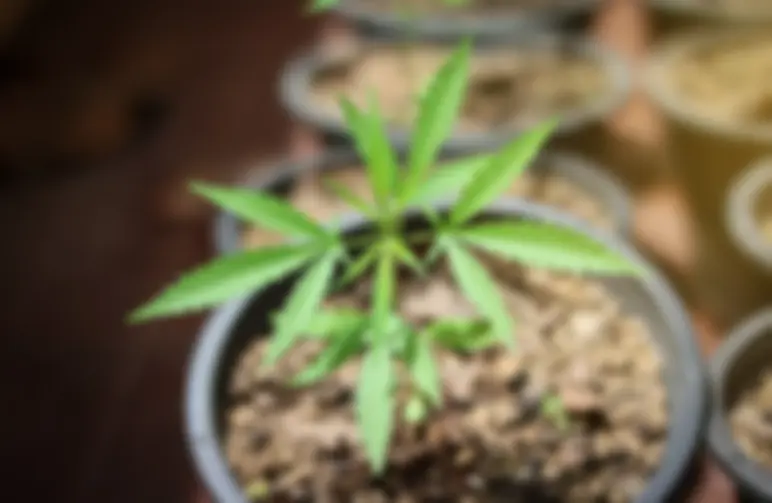If you've been doom-scrolling forums and getting 10 different answers about pots for autos, breathe. This guide breaks it down plainly so you can choose once, grow happy, and harvest heavy.
With autoflowers, time is short. They don't wait around to recover from mistakes, especially root stress.
The right pot gives your roots oxygen, prevents overwatering drama, and lets the plant hit its genetic ceiling without getting rootbound or staying soggy.
By the end, you'll know exactly what size, what type, and why, plus a simple setup you can copy today.
Key Takeaways
- For most indoor grows, a 3-gallon fabric pot is the sweet spot for autos, outperforming 2-gallon by ~15–25% in yield and keeping watering predictable.
- Match pot size to goals and conditions: 1.5–2.5 gal for compact autos, 2–3 gal for standard indoor plants, 3–4 gal for max single-plant yield with strong light, and 5–7 gal outdoors for heat/wind buffering.
- Avoid root issues by sizing “just right”: too small dries fast and rootbinds; too big stays wet, slows growth, and can cause nutrient lockout.
- Favor fabric or air pots for autoflowers to promote air pruning and oxygen exchange; if using plastic, drill side holes, elevate the pot, and use a chunky aeration mix.
- Start seeds in the final pot with a light, airy medium, then water by weight (not schedule) and maintain airflow with risers to prevent soggy media and gnats.
- Bigger isn’t always better for autoflower pot size—indoors, going beyond 5 gallons often slows early growth without improving yield.
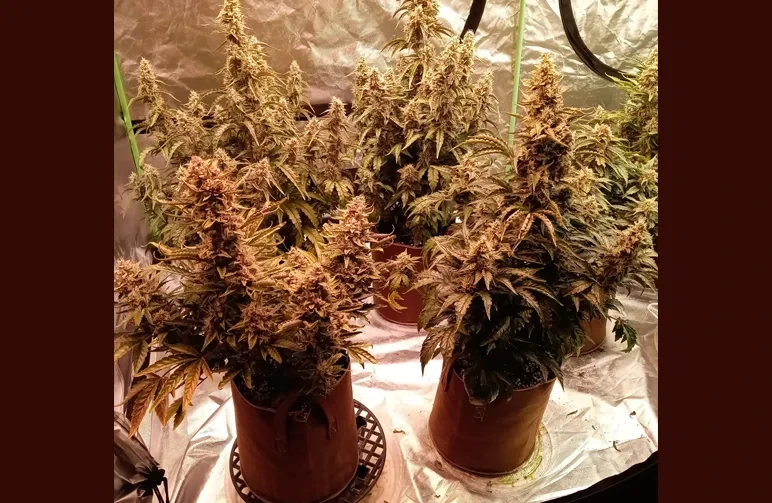
Why Pot Size is a Game-Changer for Your Autoflowers
Autoflowers run on a fixed timer. Most finish in 9–12 weeks from sprout, which means every week counts.
If we cramp roots in a tiny container, the plant gets rootbound (roots circle the pot, choke themselves, and stop exploring). That triggers stunting, nutrient deficiencies, and sad, small buds.
If we overshoot and go too big, the medium stays cold and wet. That invites slow growth, weak roots, and nutrient lockout (when the plant can't absorb minerals even if they're present, usually due to poor root health or wrong pH).
The sweet spot? A pot that's big enough for full root development but not so large that the soil stays soggy. We've run side-by-sides in our lab—same genetics, same light, different pot sizes—and the "just right" container consistently wins on vigor and yield. Let's lock yours in.
How to Choose the Right Pot Size (The Goldilocks Method)
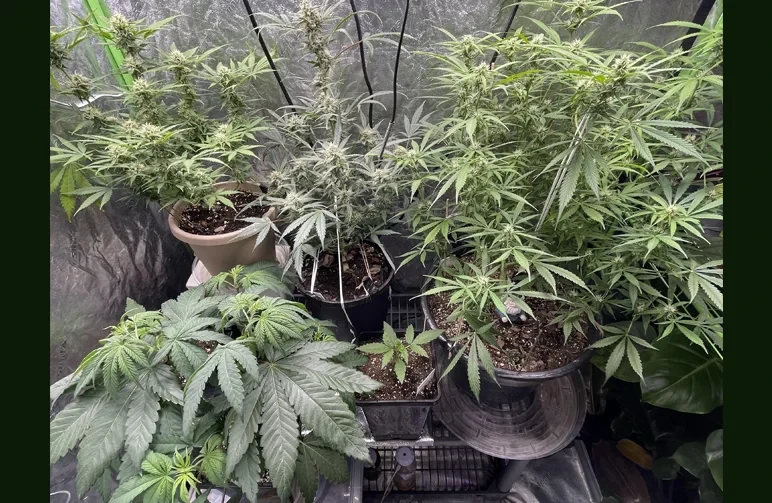
Here's the simple framework we use with autos:
- Too Small: You'll see fast drybacks, droopy plants right after watering, and roots poking out the bottom early. That's root lock. The plant can't expand its root mass, so it downsizes its ambitions—short internodes, small buds, nutrient issues.
- Too Big: The soil takes ages to dry. You water lightly and still get droop because roots aren't getting oxygen. This often leads to overwatering symptoms (yellowing, slow growth) and nutrient lockout. It's not that the pot is "evil," it's that the root system can't colonize the whole mass quickly enough.
- Just Right: The plant drinks steadily every 1–3 days in veg and 2–4 days in flower (environment dependent). You get a firm, white root network throughout the pot, no circling, no swampy zones. Growth is consistent, stems thicken up, and flower sites stack.
Think of roots as the engine and soil as the chassis. The engine needs enough space to rev, but not a school bus when you're driving solo.
With autos, we want quick root fill, strong oxygen exchange, and predictable watering. That's why most growers land around 3 gallons (≈11 liters) for typical indoor autos.
Autoflower Pot Size Recommendations: A Quick-Reference Chart
Use this as your go-to reference. We've matched plant size goals to pot size, plus what to expect.
| Grow Goal / Plant Size | Recommended Pot Size | Why It Works | Notes |
|---|---|---|---|
| Small & Stealthy (under 24–28 in / 60 cm–70 cm) | 1.5–2.5 gal (6–9 L) | Fast root fill, easy watering rhythm | Expect modest yields, great for micro tents or stealth grows. |
| Standard Indoor Autos (70 cm–100 cm) | 2–3 gal (7–11 L) | Balanced: strong roots without swampy soil | 3 gal (~11 L) is the proven "sweet spot". |
| Maximize Single-Plant Yield (taller phenos) | 3–4 gal (11–15 L) | Supports bigger canopies and heavier buds | Only go 4 gal if your light, airflow, and feeding are dialed in. |
| Small Outdoor Patio Grow | 4–5 gal (15–19 L) | Buffers heat/wind, more hydration in full sun | Heavier pots: plan your watering schedule. |
| Outdoor Full-Season Auto | 5–7 gal (19–26 L) | Extra water and root room for hot, dry days | Beyond 7 gal rarely helps for autos. |
Concrete example we've run: Two identical autos under a true 300W LED. One in 2 gal, one in 3 gal (both fabric). The 3 gal consistently gave us ~15–25% more dry weight with fewer watering quirks.
Indoor vs. Outdoor Growing: Tailoring Your Pot Size
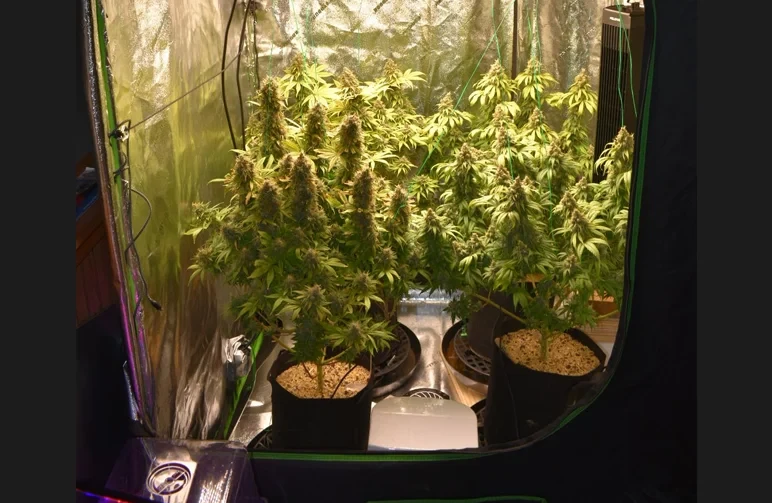
Indoor: Air is stable, light is fixed, and we control temperature and humidity. Here, 2–3 gal (7–11 L) fabric pots make watering predictable and growth lively.
If you're running fewer plants under a stronger light (say, 480W in a 4×4), 4 gal can make sense, just keep airflow up and don't drown them.
Outdoor: Sun, wind, and heat can swing hard. Larger pots (5–7 gal) give a moisture buffer and thermal mass. Translation: the root zone warms and cools slowly, and the plant doesn't wilt the second the sun bakes your deck.
If you're in a very hot, dry region, light-colored fabric pots help keep the root zone cooler.
Panic question we hear: "I only have 5-gallon buckets, did I ruin my plant?" Nope. Drill plenty of holes for drainage, use an airy mix, and water by weight (don't top up on a schedule: lift the pot and learn its "lightness" before watering). You'll be fine.
Best Pot Types for Autoflowers: Fabric vs. Air Pots vs. Plastic
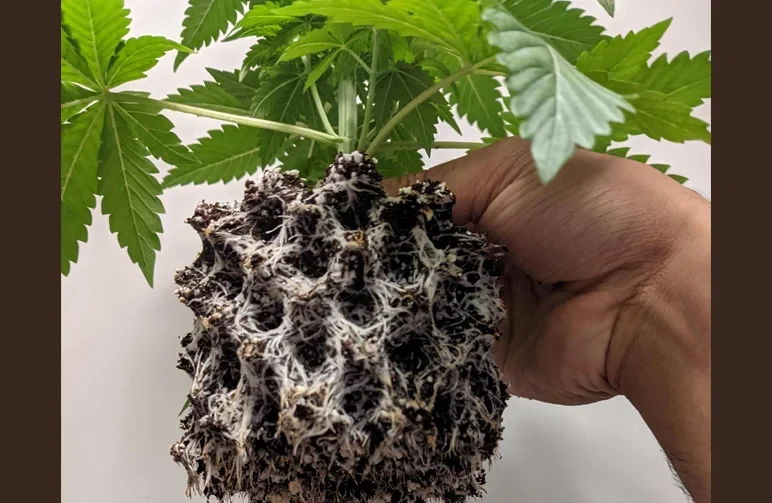
Here are the main options and what they actually do for you.
- Fabric or Air Pots: These are breathable containers (felt-like fabric or molded with side holes) that "air prune" roots. When a root hits the side, it meets air and stops elongating.
The plant responds by branching more feeder roots—think dense, white fuzz instead of one circling rope. That boosts oxygen exchange and reduces root rot risk.
We lean fabric for autos because it accelerates root development, which accelerates the whole plant. - Plastic Pots: Cheap and available everywhere. They retain water longer because the sides aren't breathable. That can be helpful if your environment runs hot and dry.
The downside: higher risk of overwatering and circling roots unless you've got many side holes and excellent drainage.
Our Field Notes:
- Fabric + 3 gal is our indoor default. Faster root vigor, happier watering cadence.
- If you must use plastic, drill extra side holes, raise the pot on a rack, and use chunky aeration (perlite or pumice) in the mix.
- Avoid glazed ceramic (pretty, but terrible airflow and heavy as heck).
Best Practices for Potting Your Autoflowers
Autos hate rough handling early. They don't veg long, so any slowdown costs you yield. Here's the clean, repeatable method we use.
- Start in the Final Pot
- Why: Transplant shock is real with autos. Sowing directly avoids it.
- How: Fill your final container (e.g., 3 gal fabric) with a light, airy medium and plant the seed straight in.
- Build an Airy, Well-Draining Medium
- Recipe Example: 60% quality potting soil or coco, 30% perlite/pumice, 10% worm castings. Add mycorrhizae at the seed hole if you have it.
- Target pH: 6.0–6.5 for soil; 5.8–6.2 for coco.
- Water by Weight, Not by Calendar
- The Test: Lift the pot. If it still feels heavy, skip watering. If it's getting light and the top inch is dry, water slowly.
- Veg Phase: Water every 1–3 days.
- Flower Phase: Water every 2–4 days.
- Pro Tip: In early life, use small amounts (100–200 ml) in a ring around the seedling, not saturating the whole pot.
- Use Risers for Airflow
- Set pots on risers or grids so runoff drains freely. Keep a fan moving air across the pot surface: it prevents stale humidity and fungus gnats.
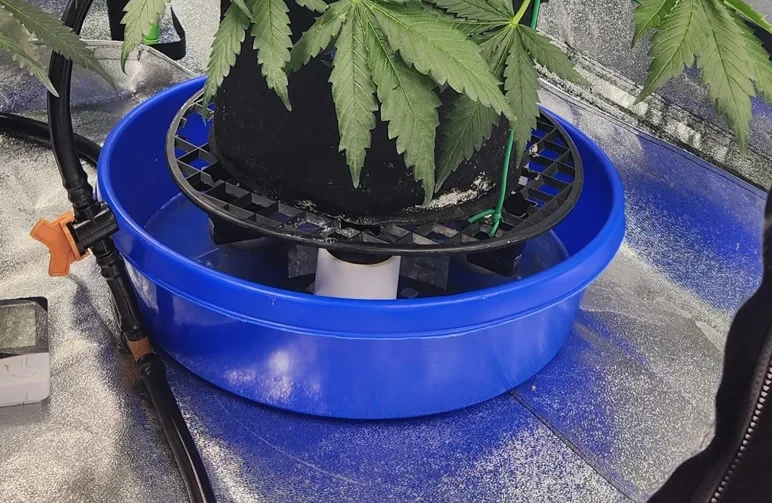
The cure for 'wet feet': This clean drainage setup by Reddit user u/vengefulnarwhal demonstrates the importance of elevation. By placing the fabric pot on a plastic riser grid inside a catch tray, runoff water flows freely away from the roots. This prevents the medium from re-absorbing stagnant water (wicking) and ensures the bottom of the root zone gets plenty of oxygen.
- Set pots on risers or grids so runoff drains freely. Keep a fan moving air across the pot surface: it prevents stale humidity and fungus gnats.
- Training with Pot Size in Mind
- Low-stress training (LST) is great around weeks 2–4.
- In a 3 gal fabric pot, a simple LST spiral around the rim works beautifully. Skip heavy pruning.
Frequently Asked Questions (FAQ)
What's the best indoor pot size for most autoflowers?
2–3 gal (7–11 L), with 3-gallon fabric pots being the default choice for the best balance of growth and ease of care.
Can I transplant autos (up-potting)?
You can, but we don't recommend it for new growers. Autos have little time to recover. If you must, transplant very early (before day 10) and move the entire root ball without breaking it.
Sowing directly into the final pot is safer.
How many autoflowers can I fit in a 4x4 tent?
This depends on pot size. You could comfortably fit four plants in 3-gallon pots or two to three in 5-gallon pots. Using 3-gallon pots generally results in a more even canopy and higher overall yield for the space.
Does pot color matter for autoflowers?
Yes. Outdoors, dark pots absorb heat and can cook roots in hot climates. Choose light-colored fabric pots (tan, white, grey) to keep the root zone cooler. Indoors, it matters less, but black is standard.
What do I do if my autoflower outgrows its pot?
If it's early in veg, a very careful transplant might be possible. If it's already flowering, it's too late. Your best bet is to water more frequently and accept that the yield will be limited.
It's a lesson for the next run: always err on the side of "just right."
Conclusion: Your Blueprint for Success
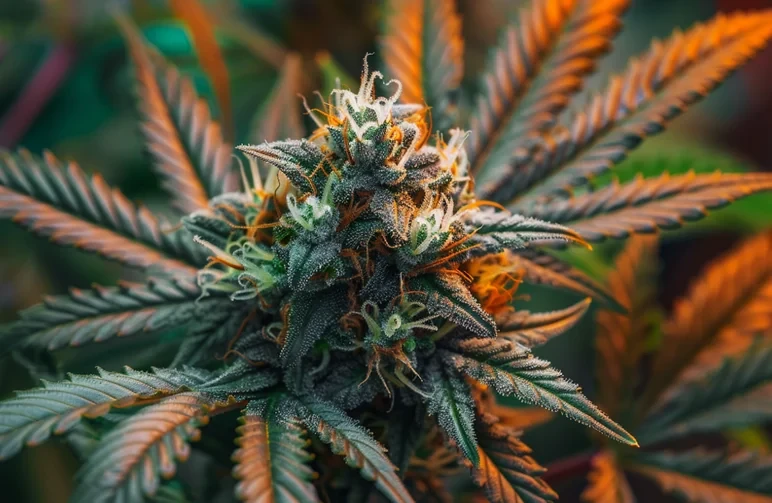
If you remember one thing from this guide, make it this: pick a pot that roots can fill fast, not a bathtub they'll drift in. Success with autoflowers comes from removing obstacles, and the right pot is the foundation.
For most indoor growers, that's a 3-gallon fabric pot with an airy mix. Start seeds in the final container, water by weight, and keep airflow steady.
Do that, and you'll stack fat, frosty buds without wrestling watering headaches.
Now that you have the blueprint for the perfect foundation, pair it with elite genetics. You’ve got the pots sorted; now make sure you nail lighting, nutrients, and training by following our guide to growing autoflowers from seed.
Grab proven autoflower seeds from WeedSeedsExpress—we hand-pick and test our strains, back them with a germination guarantee, and ship discreetly. Good pots plus good seeds equals good weed. Let's grow.
